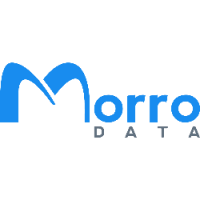5 Reasons to Demand More from Your Cloud Storage
5 Reasons to Demand More from Your Cloud Storage
Businesses have tried every form of cloud storage imaginable to store and protect the files of individual users and share them across teams and locations. Cloud storage solutions such as Google Drive, Dropbox, Sharepoint, and Amazon Drive have been used by businesses for years, with varying levels of success. While each of these systems has its merits, they also each suffer from inherent limitations – and all fail to truly provide a comprehensive 3-in-1 solution for businesses to effectively store, sync, and protect data across the organization. This is particularly evident when teams are spread across multiple office locations.
How Dropbox Works
For example, while Dropbox meets the initial storage and sharing requirements of individuals with relatively small files, it relies on direct syncs with each user’s computer. This becomes abundantly less desirable when large file sizes, a large number of files, or many users are involved. Consider a design team sharing an abundance of pictures, graphics, and other large files. Most computers don’t have enough storage to sync all of these files, and the uploads and downloads can be excruciatingly slow. This issue can be so prominent for overseas team members that they’re unable to use the system at all.
How to Access Google Drive
Other sharing systems, such as Google Drive or Amazon Drive, fall short in other ways. Many require users to upload, download, and manage files via a Web interface, with no client-based file system to make things more user-friendly. Requiring multiple users to inherently understand the underlying file structure is always a bad idea, and the continuous requirement for users to switch between the web interface and their desktop file system creates a level of inefficiency that counteracts the benefits the team would otherwise gain by using it.
The versioning in many of these systems is also poor, leading to version control issues when multiple users have edit privileges to the same file – common practice for many teams. While some cloud solutions have collaboration support for office docs (Google Suite, Office 365), they lack File Locks on applications like AutoCAD and Revit. These are critical software formats for architecture and construction firms that work with these files on a daily basis.
Top 5 Benefits of Cloud Storage
To maximize their productivity and efficiency, businesses must demand better from their cloud storage solution. Consider the following a “Bill of Rights”, of sorts, to ensure that the storage system is the best fit for your needs:
1. Freedom of Choice
Web access to files needs to be an access method, not the only access method. Instead, the ability for each user to access even shared files via their local file system is paramount. This is only possible when files are automatically synced in the background upon each save.
2. Hard Drive Relief
Syncing needs to be continuous, and not require that every file is saved to the user’s computer. This simply can’t scale when numerous large files are involved. Instead, the ability to save directly to the cloud file system must be built-in.
3. Fast File Access
High performance is an absolute must. Most businesses shy away from the cloud as their primary storage environment because of the inherent latency involved with traditional cloud-based synchronization. Simply stated, if files are stored far away, it takes longer to send and retrieve them. So, the cloud-based storage system must also have local cache capabilities to ensure local network performance. While this is important for every user, it becomes absolutely imperative for overseas users.
4. Ease of Use
The file system must be straightforward and user-friendly. Users must be able to easily navigate to the files they need, without requiring intimate knowledge of the underlying structure.
5. Safety for All
Version control must be robust, automated, and foolproof. Multiple users must have the ability to review and edit files – simultaneously or overtime – without overwriting or corrupting prior versions.
Hybrid Cloud Solution
The Morro Data CloudNAS and CacheDrives built on cache and sync deliver all the above, the scalability of the cloud and local performance while keeping the familiar prove HAS file server experience.
-
Multi-Site File Sync
-
Global File Locking
-
Collaboration on Revit, AutoCAD, Microsoft Office
-
SharePoint Sync
